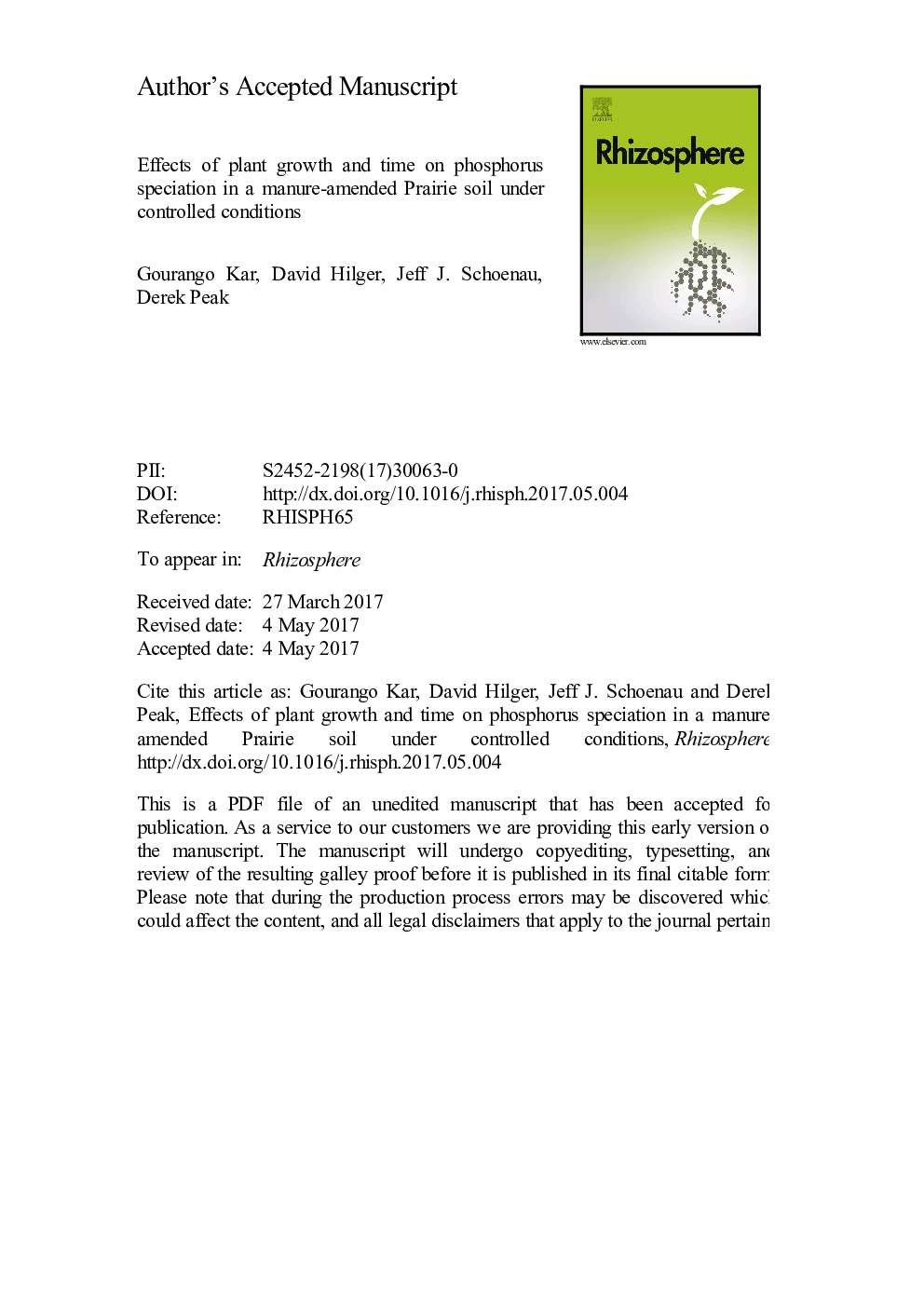| Article ID | Journal | Published Year | Pages | File Type |
|---|---|---|---|---|
| 5762797 | Rhizosphere | 2017 | 26 Pages |
Abstract
The fate of phosphorus (P) added as manure to soils is affected by the presence of plants and time. A growth chamber study was conducted to determine how the presence of canola (B. napus) plants influences the forms and distribution of P in a typical cultivated prairie (Saskatchewan, Canada) soil at 1, 3, and 5 weeks after addition of solid cattle manure (SCM) and liquid hog manure (LHM). Techniques used for speciation of soil P included sequential chemical extraction and synchrotron-based spectroscopy. Manure addition, especially SCM, increased P concentration in the labile fractions, with similar patterns of change in P fractions over time and effects of plant uptake on fractions in both manured and non manured soils. The concentrations of most P forms were decreased in the presence of plants, especially labile P (resin-P and NaHCO3-P) in the SCM soil after 5 weeks of plant growth. A significant increase in NaOH extractable inorganic P and more stable HCl extractable P was observed over time along with significant decrease of resin-P and NaOH organic P forms. The X-ray absorption near-edge structure (XANES) spectroscopy results indicated that no large changes in the bulk speciation or P crystallinity in the manured soil were occurring over the five-week period. This suggests that plant growth drew from all soil P pools relatively equally during this study.
Related Topics
Life Sciences
Agricultural and Biological Sciences
Agronomy and Crop Science
Authors
Gourango Kar, David Hilger, Jeff J. Schoenau, Derek Peak,
